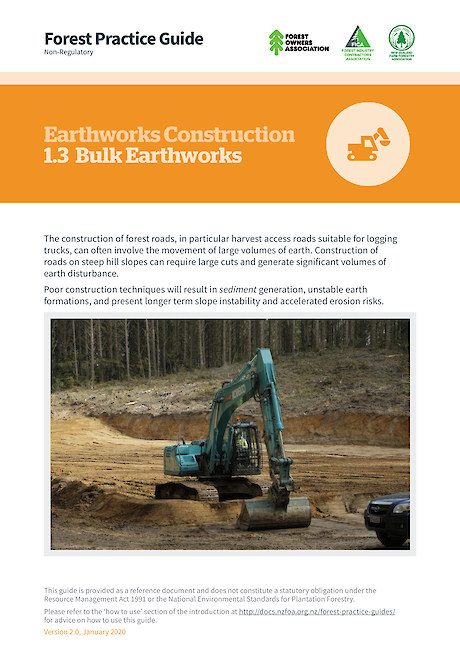Summary
This guide covers bulk earthworks for the construction of forest roads and landings, including side-cast construction, sidling cut to fill (cut and bench construction), sidling cut (full bench construction), and embankment fills. It outlines best practice techniques for forestry earthworks construction and should be used in conjunction with FPG 1.1 Planning and Design, and FPG 1.2 Stripping and Clearing.
File type:
PDF
File size:
3.46 MB
Pages:
12

